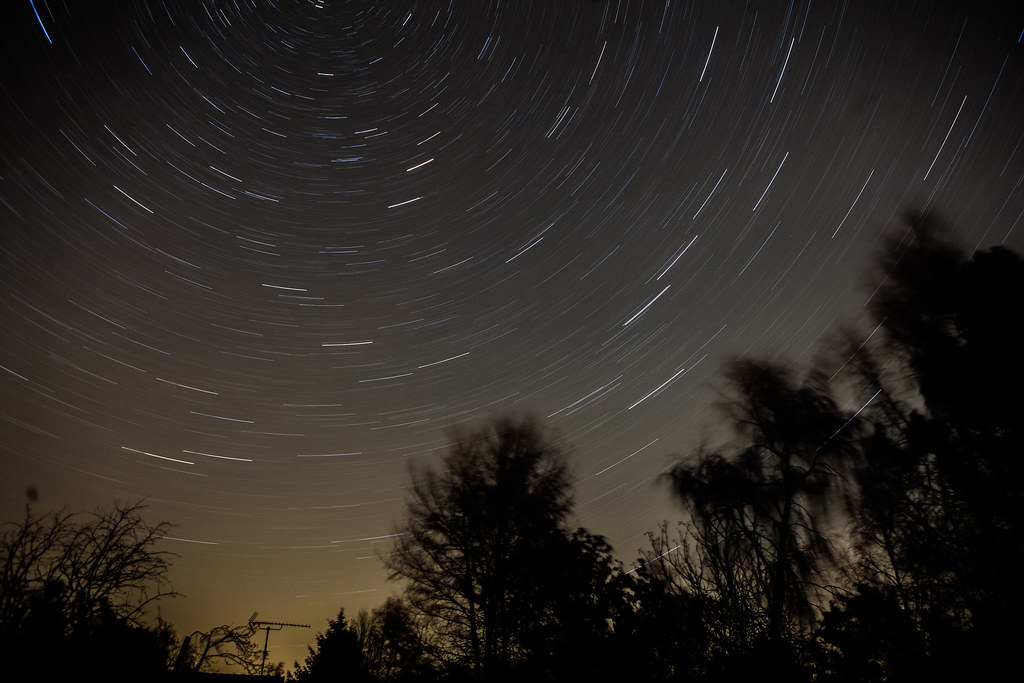
30s, f/4.0, ISO 1000, 24mm
It had been a while since I had experimented with shooting the night sky. I've always been fascinated with astronomy. I worked at a planetarium in high school and recall how frustrating taking pictures of stars would be with a film camera. With the instant feedback of a digital camera, it's a lot easier to get a decent photo of the night sky without investing a lot of time in sorting out the right exposure. Trial and error really go a long way here.
I took these two shots on a cold January night near Hornbæk in Denmark. Hornbæk is about an hour north of Copenhagen and near the water. It's a popular spot for summer houses but in the winter time it's pretty quiet. And there is very little light at night. On a clear, cold winter night, the night sky is absolutely breathtaking. The first shot is a 30 second exposure, featuring most of the Orion constellation. Sirius, the brightest star in the night sky is also visible on the left side behind the trees (or try following Orion's belt to the left). In the second shot below, the exposure is about half an hour long. It captures the stars as they appear to rotate around the North Star (of course the stars don't really move but we/Earth does).

33m, f/4.0, ISO 800, 25mm
Very cool!
ReplyDelete